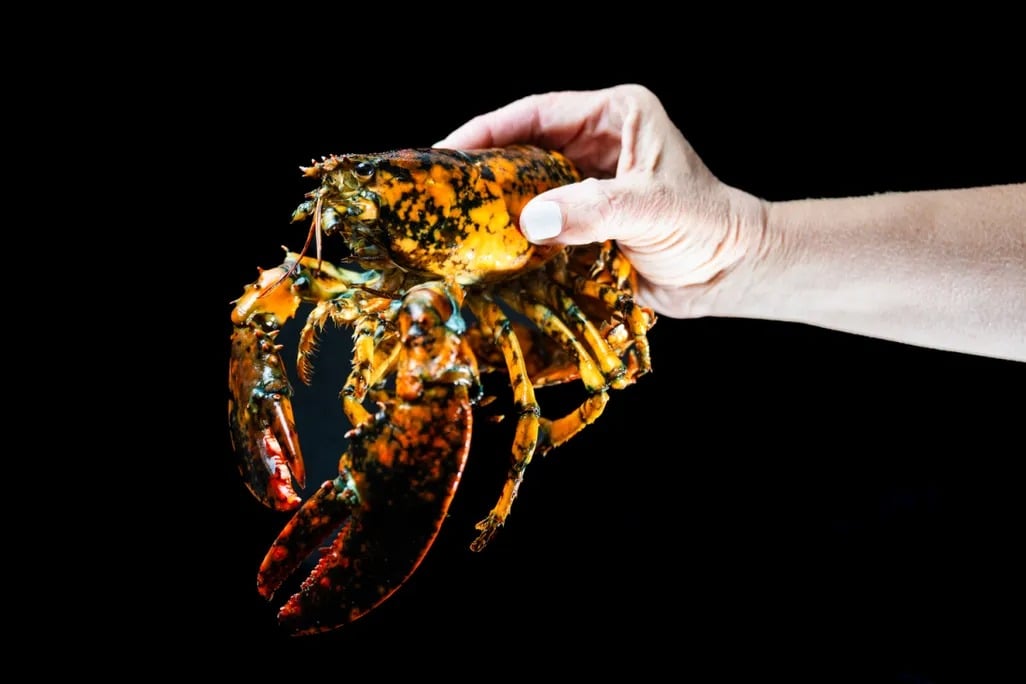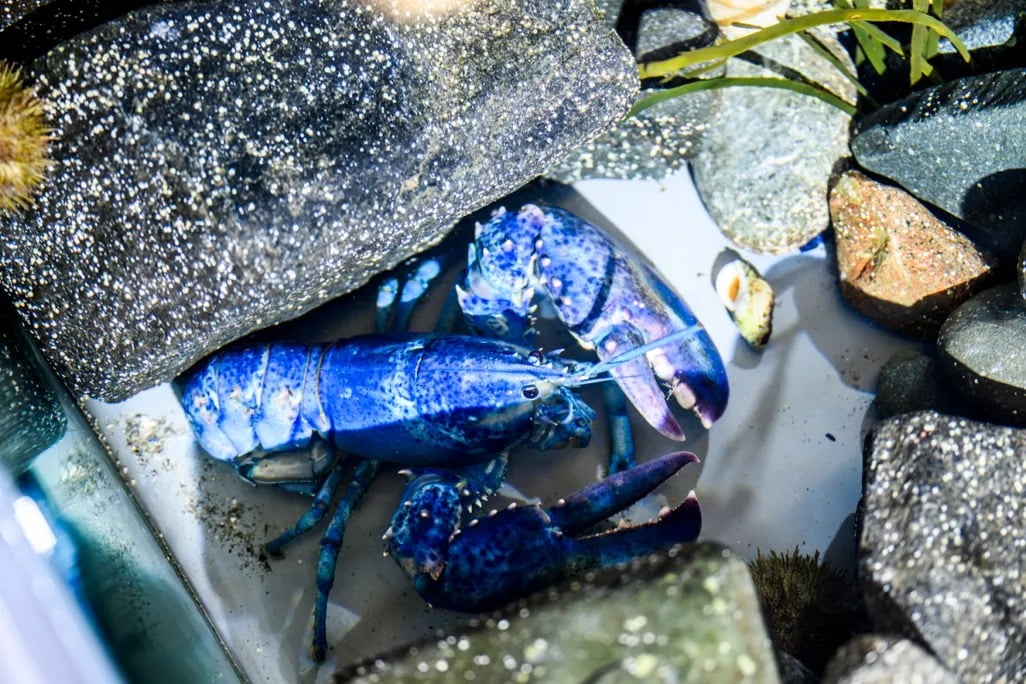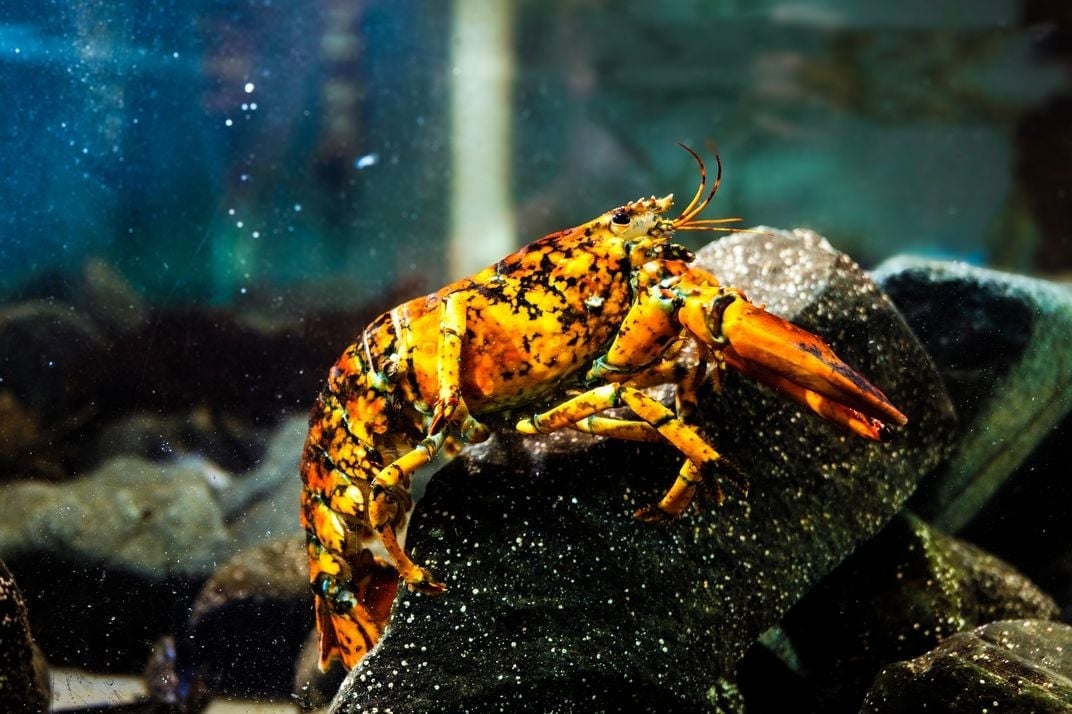Rare Lobster Shows Off Spooky Halloween Colors
Language
Reading Level
Listen to Article
Alignment

Just in time for the season, Northeastern University’s Marine Science Center in Nahant, Massachusetts, has unveiled a lobster with Halloween colors. Aptly named Jack O’Lantern, or Jackie, she sports a mix of orange, black, and yellow, with hints of blue on her joints. This American female lobster, introduced to the public on October 9, 2025, is an exceptionally rare find. Sierra Munoz, the center’s outreach coordinator, says only one in 30 million lobsters has this color.
Jackie was caught by Mike Tufts, a lobsterman from Gloucester, Massachusetts. Realizing she may be special, he contacted the marine center to see if they wanted her. They instantly agreed!
"One day, he sent me a message with a picture of this beautiful calico and asked if we had room in our tanks for another beautiful, rare lobster," Munoz recalls. "I said, 'Of course we do!'"

Jackie is not the only rare lobster at the center. Earlier this year, another fisherman brought in a bright blue American male lobster, which the center named Neptune. He is a one-in-two-million find. The colorful lobsters have been a big draw for visitors. However, they are not sharing a tank. American lobsters are protective of their space, and the two may fight. Instead, Jackie and Neptune live with other local marine animals, such as winter flounder and moon snails.
Jackie and Neptune's unique colors come from the pigments in their shells. Lobsters have a mix of red, blue, and yellow pigments that usually combine to produce their typical brown color. In rare cases, such as with Neptune, an excess of blue resulted in a bright blue shell. In Jackie’s case, the pigments did not mix evenly, giving her a striking multicolored pattern. While beautiful, these colors make it easier for predators to spot the lobsters. Hence, very few survive.

Lobsters are often seen just as a tasty treat. But these crustaceans are full of surprises! Their brains are in their throats, teeth in their stomachs, and kidneys in their heads. They have poor eyesight and no ears. They use their legs to sense vibrations and their feet to find and taste food. The lucky ones, like Jackie and Neptune, who dodge predators, can live up to 100 years!
Resources: Smithsonianmag.com, news.northeastern.edu